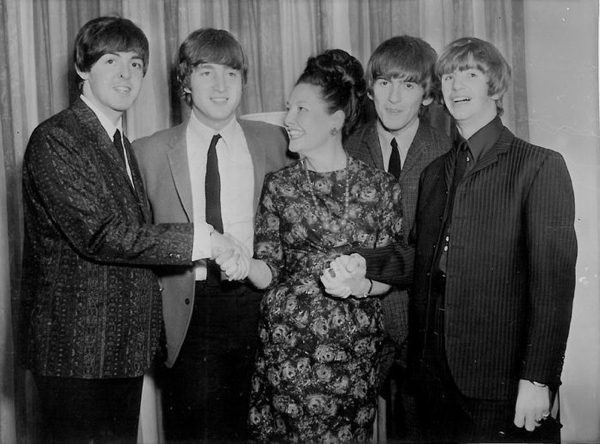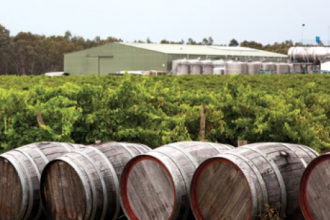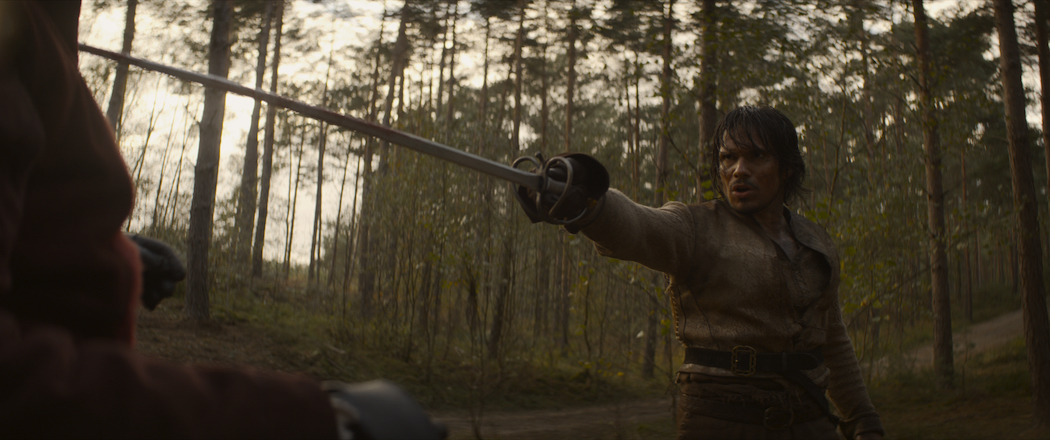
The opening night of the 35th annual French Film Festival featured The Three Musketeers: D’Artagnan (Les Trois Mousquetaires – D’Artagnan), directed by Martin Bourboulon. Having read the Alexander Dumas novel as a teenager, I was captivated by the dash and daring of the musketeers and their ongoing battles with Richelieu’s men.
Adaptations of the Dumas novel have been part of French cinema since 1903 when the first Three Musketeers film was produced, and those adaptations are indicative of the history and development of French cinema itself. This latest one, being the biggest box office earner in France in 2023, has an all-star cast including Francois Civil as D’Artagnan, Vincent Cassel as Athos, Romain Duris as Aramis, and Pio Marmaï as Porthos. Eva Green plays the shadowy Milady de Winter, Louis Garrel plays Louis XIII, and Lyna Khoudri is D’Artagnan’s love interest as Constance, the Queen’s consort.
The story centers on the young Charles D’Artagnan travelling to Paris to fulfil his lifelong dream of becoming a musketeer. Initially falling foul of the famous three, they soon become friends as they recognize his skill and bravery. He subsequently becomes part of a plan to save the Queen’s honour, not to mention Athos’s life.
As we all know, D’Artagnan does become a musketeer, but the story doesn’t end there. There are in fact two sequential films as part of the musketeer story at this year’s festival. The Three Musketeers: D’Artagnan (Part 1) is followed by The Three Musketeers – Milady (Part 2) where the adventures and the intrigues continue. During the festival, there are various opportunities to see the films, either separately or as part of a double bill. And fittingly, just as the festival opened with Part 1, it closes with a screening of Part 2.
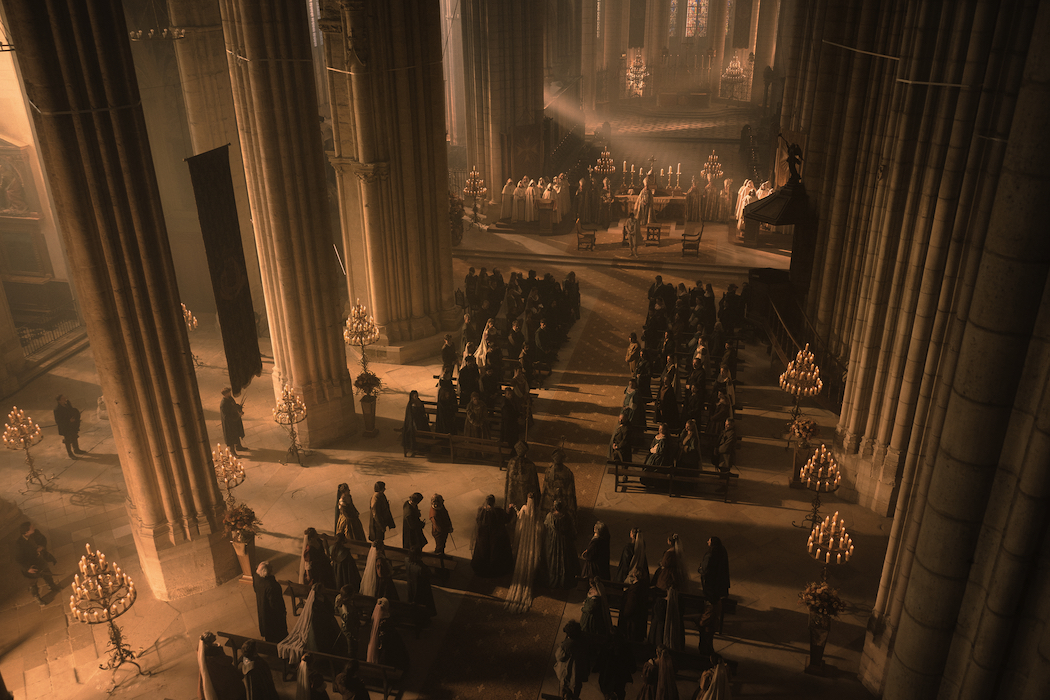
Australians have embraced the French Film Festival to the extent that it is now the biggest in the world outside France. Screened in 15 capital cities and regional centers around Australia during March and April, the festival gives recognition to our country’s appreciation of the uniqueness and quality of French film. The French capture the comedy, drama, romance, culture and peculiarity of life and humanity through the medium of film in a way that no other film industry in the world can.
Despite being devastated by both the First World War and the Second World War and recently to a lesser extent by Covid, the French film industry has endured and prospered such that it is the largest in Europe and now produces more than 200 films a year and is a multi-billion-dollar business. Its recent success can be gauged by the movie Anatomy of a Fall (Anatomie d’une chute) which won the 2024 Academy Award for Best Screenplay, as well as the 2023 Palme d’Or and numerous other awards.
The late filmmaker, Jean-Luc Godard, whose New Wave films, such as Breathless and La Chinoise, were a turning point in French cinema, once said: “I pity the French Cinema because it has no money. I pity the American Cinema because it has no ideas.”
Some may not agree with that summation but it could be one reason why there have been so many American remakes of French movies, including ones such as Father’s Day, Twelve Monkeys, Three Men and a Baby, and The Birdcage, to name just four out of hundreds.
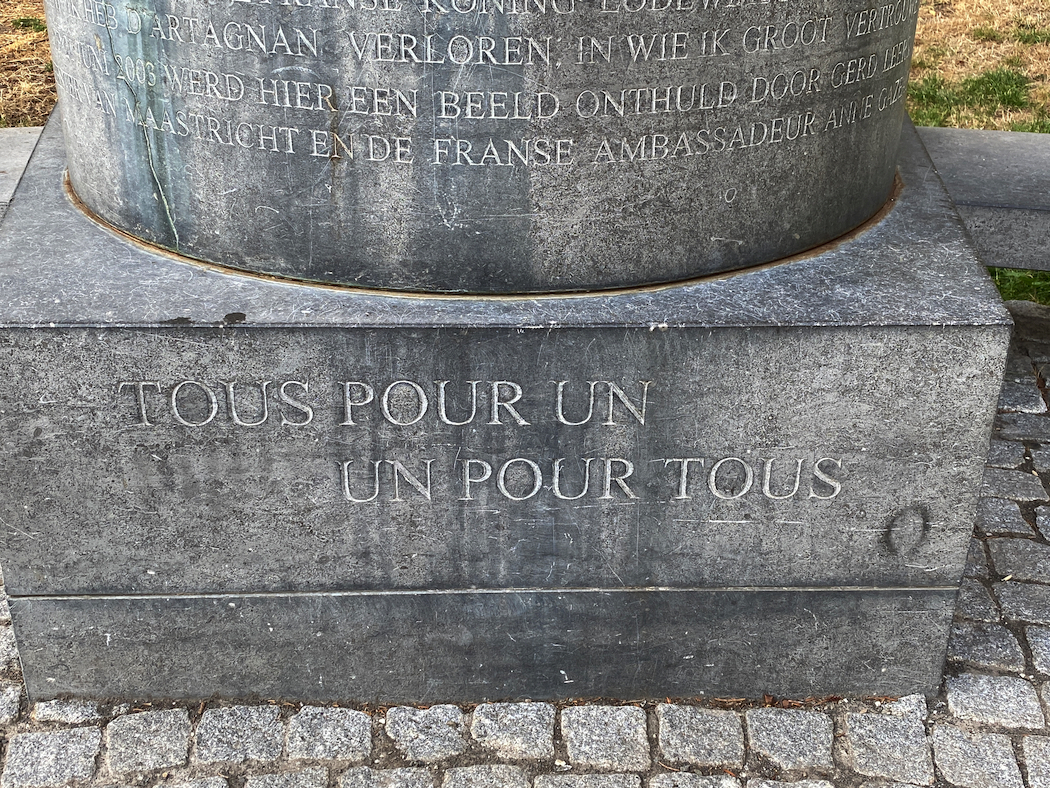
In France, Hollywood, or a string of other countries, no film has been remade more times than the Alexander Dumas story of The Three Musketeers. The 2023 films had a budget of more than €70 million which indicates that perhaps French cinema isn’t so poor anymore.
Just as Shakespeare’s plays were usually based on real people and real events, the Dumas novel had a basis in fact. The king and queen of France were of course real and so was Cardinal Richelieu, although perhaps not as sinister in real life as portrayed by Dumas. Just like the three musketeers, D’Artagnan was a real character who had already been fictionalized by the time Dumas wrote his novel in 1844. The real D’Artagnan became commander of the musketeers under Louis XIV and died at the siege of Maastricht in the Franco-Dutch War on 25 June 1673.
In Maastricht in The Netherlands last year, we visited his statue which bears the inscription, “Un pour tous, tous pour un.” These words, used by Dumas in his novel, highlight the point that the story of the musketeers has become an interesting blend of fact and fiction. It is unknown and unlikely if the real musketeers ever used that motto, but it is now synonymous with the story. Likewise, many of the locations and landmarks associated with the real characters have become mixed up with the movie locations.
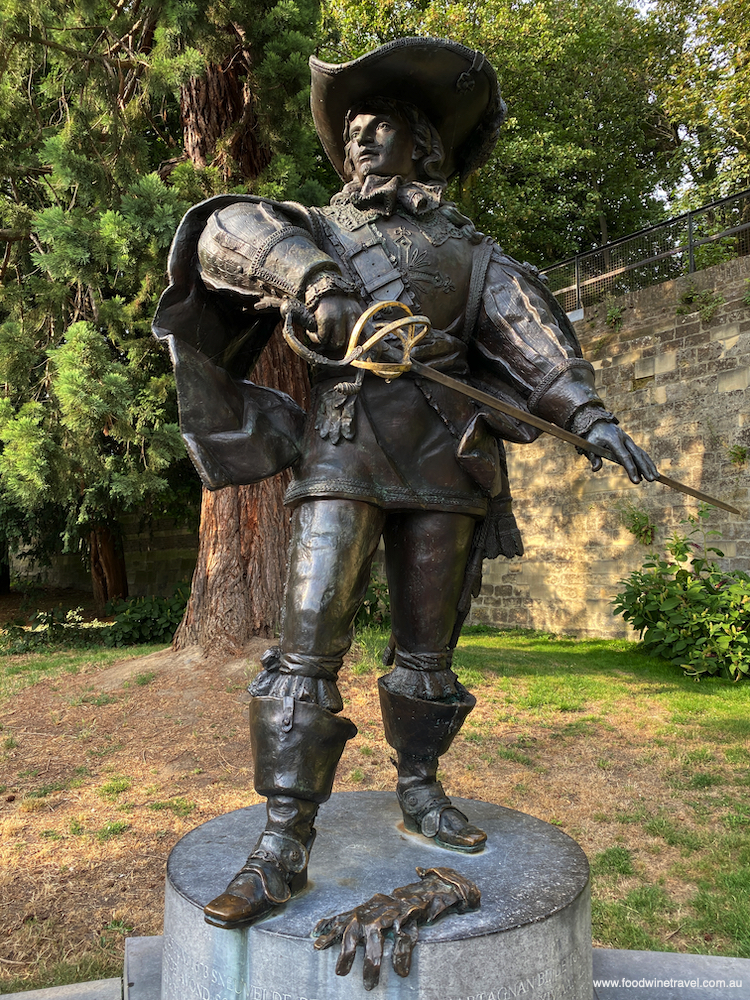
It’s not in the current movie but you can see Château de Castelmore, a registered historic monument and the birthplace of Charles de Batz Castelmore Count d’Artagnan (otherwise simply known as d’Artagnan) in the village of Lupiac in Gascony. There is also a d’Artagnan museum in the village. The Chateau is currently for sale if you have a few million Euro to spare.
In Paris, in the Place du Général Catroux, on one side of a monument devoted to generations of the Dumas family, there is also a statue of D’Artagnan. Is he the fictionalized character or the real one? Fact or fiction? Also in Paris you can visit the place where the real D’Artagnan once lived.
In the 2023 version of the musketeers, director Martin Bourboulon shoots many of the scenes outdoors, giving them relevance and reality. No studio set could compare with all these magnificent and iconic locations, such as the Palace of Fontainebleau, once the residence of French monarchs, and the beautiful Royaumont Abbey, just north of Paris. Locations also included the Cathedral of Saint-Etienne de Meaux, just east of Paris, Saint-Malo in Brittany, and the medieval old town of Troyes, located on the Seine about 140 kms from Paris. All these locations, either historically relevant to the story or just movie settings, could become part of a D’Artagnan Trail.
Interestingly, another two-part film adaptation of the musketeer’s story was made in 1961. Directed by Bernard Borderie, Part 1 was titled The Queens Diamonds (Les Ferrets de la Reine) and Part 2 was Milady’s Revenge (La Vengeance de Milady), very much similar to the 2023 version. With a top cast, it was a big hit in France in 1961 and again used some very historic and iconic locations. One of those locations, the Abbaye de Fontenay has been the location for a number of films and was a place that certainly stuck in our memory after we visited there a few years ago. We didn’t know then that we were on the D’Artagnan trail.
The 12th century Abbey near the town of Montbard in Burgundy is a UNESCO World Heritage site. Located in picturesque gardens and a park covering 1200 hectares, it has an incredible 900-year history, from a place of worship and learning, to a paper mill run by the Montgolfier brothers after the French Revolution, to a place privately owned by the Aynard family, to a World Heritage site in 1981.
I’m not sure if any of the musketeers ever visited the abbey but it was a superb location for the story in the 1961 film and well worth a visit if you are following the D’Artagnan Trail. With both historic sites and movie locations, the trail could be the basis for an excellent tour of France. (It also goes beyond France if you head to the scene of D’Artagnan’s demise in Maastricht.)
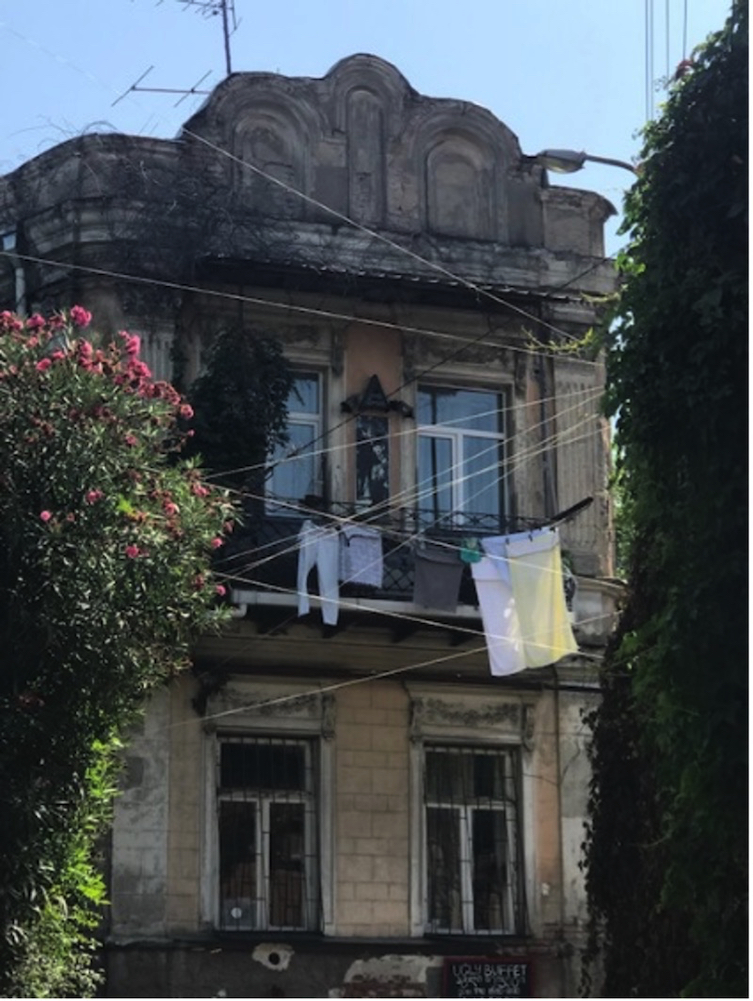
But here’s one other little quirky element in the story. In 2023 we visited Georgia and its capital, Tbilisi, which Alexander Dumas visited in 1858. He wrote about his time in Georgia in the book En Caucase, a travelogue which includes an account of what he called one of his greatest achievements there — winning a local wine-drinking competition. According to Ivane Kereselidze, the editor of the literary magazine Isiskari, Dumas embraced the full range of Georgian hospitality then proceeded to outdrink his hosts despite claiming he normally only drank water. Dumas wrote two fictional books based on Georgia and his time there, The Ball of Snow and Sultanetta.
We were unaware of the connection between Tbilisi and Dumas before stumbling upon Alexandre Dumas Street in Tbilisi’s old town. As soon as we saw the name, we felt impelled to check out the connection.
Fact or fiction, The Three Musketeers and Alexander Dumas have given cinema and particularly French cinema an enduring legacy and a rich source of content. For travellers, there are many possibilities to explore places that tell the story of both the real D’Artagnan and the cinematic version.


